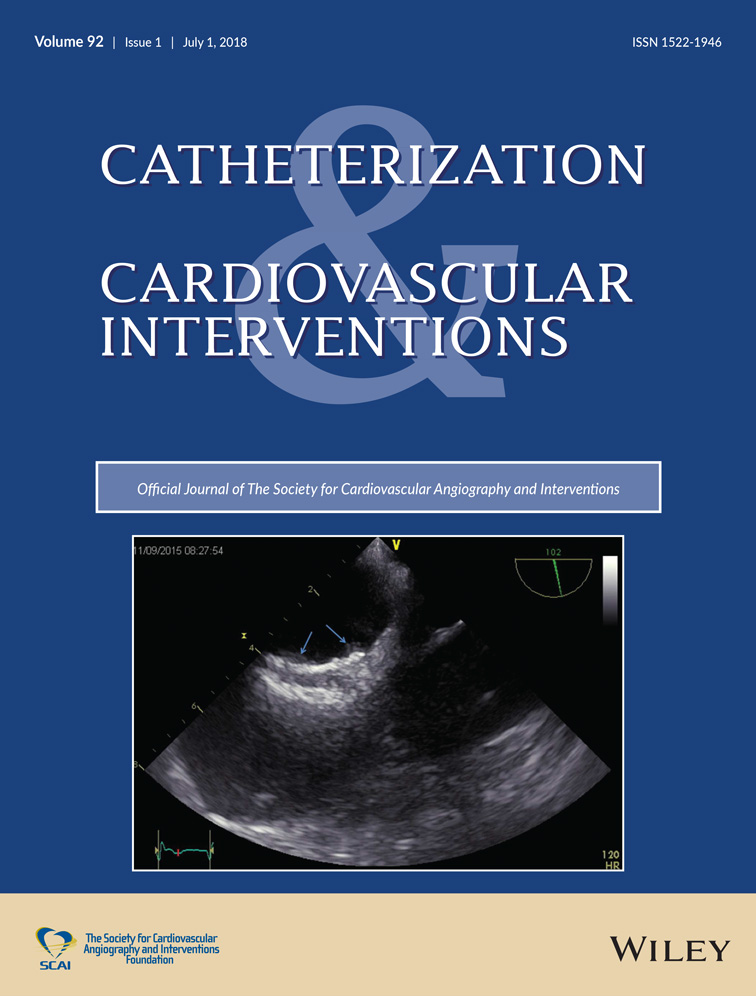Fractional flow reserve versus angiography guided percutaneous coronary intervention: An updated systematic review
Abstract
Objectives
To compare outcomes of fractional flow reserve (FFR) to angiography (ANGIO) guided percutaneous coronary intervention (PCI).
Background
The results of a recent randomized controlled trial reported unfavorable effects of routine measurement of FFR, thereby questioning its validity in improving clinical outcomes.
Methods
MEDLINE, EMBASE, and the Cochrane Central Register of Controlled Trials were queried from January, 2000 through December, 2016 and studies comparing FFR and ANGIO guided PCI were included. Clinical endpoints assessed during hospitalization and at follow-up (>9 months) included: myocardial infarction (MI), major adverse cardiovascular events (MACE), target lesion revascularization (TLR), and all-cause mortality. Additional endpoints included number of PCIs performed, procedure cost, procedure time, contrast volume, and fluoroscopy time.
Results
A total of 51,350 patients (age 65 years, 73% male) were included from 11 studies. The use of FFR was associated with significantly lower likelihood of MI during hospitalization (OR 0.54, 95% CI: 0.39 to 0.75, P = 0.0003) and at follow-up (OR 0.53, 95% CI: 0.40 to 0.70, P = 0.00001). Similarly, FFR-PCI was associated with lower in-hospital MACE (OR 0.51, 95% CI: 0.37 to 0.70, P = 0.0001) and follow-up MACE (OR 0.63, 95% CI: 0.47 to 0.86, P = 0.004). In-hospital TLR was lower in the FFR-PCI group (OR 0.62, 95% CI: 0.40 to 0.97, P = 0.04), but not at follow-up (OR 0.83, 95% CI: 0.50 to 1.37, P = 0.46). There was no difference of in-hospital (OR 0.58, 95% CI: 0.31 to 1.09, P = 0.09) or follow-up all-cause mortality (OR 0.84, 95%CI: 0.59 to 1.20, P = 0.34). FFR-PCI was associated with significantly less PCI (OR 0.04, 95% CI: 0.01 to 0.15, P = 0.00001) with lower procedure cost (Mean Difference −4.27, 95% CI: −6.61 to −1.92, P = 0.0004). However, no difference in procedure time (Mean Difference 0.79, 95% CI: −2.41 to 3.99, P = 0.63), contrast use (Mean Difference −8.28, 95% CI: −24.25 to 7.68, P = 0.31) or fluoroscopy time (Mean Difference 0.38, 95% CI: −2.54 to 3.31, P = 0.80) was observed.
Conclusions
FFR-PCI as compared to ANGIO-PCI is associated with lower in-hospital and follow-up MI and MACE rates. Although, in-hospital TLR was lower in the FFR-PCI group, this benefit was not present after 9 months. FFR-PCI group was also associated with less PCI and lower procedure costs with no effect on procedure time, contrast volume or fluoroscopy time.
CONFLICT OF INTEREST
One of the authors, Ehtisham Mahmud, served on CEC board for FAME-2 and FAME-3 trials, which were cited in this manuscript. All other authors have no conflicts of interest or financial disclosures.




